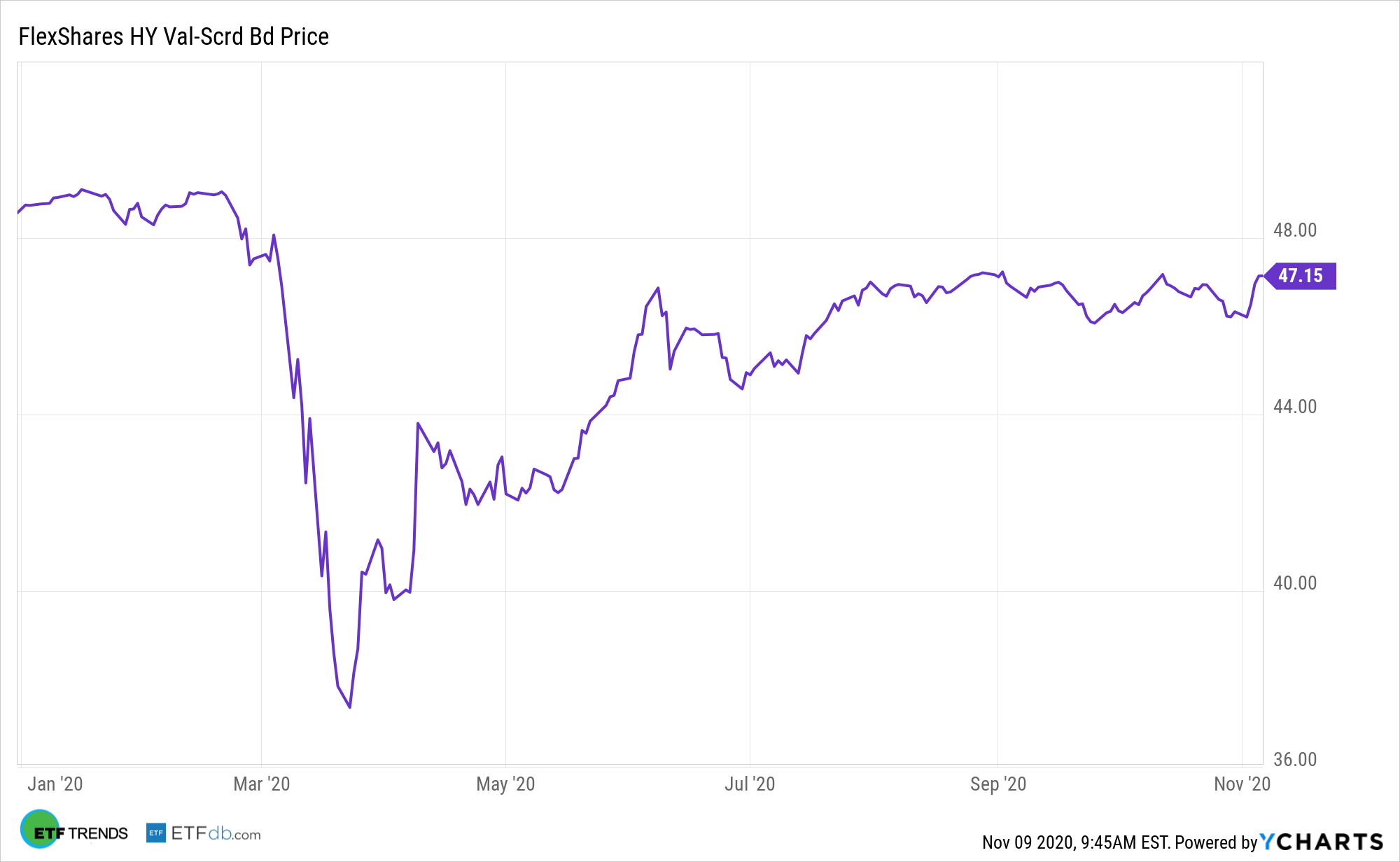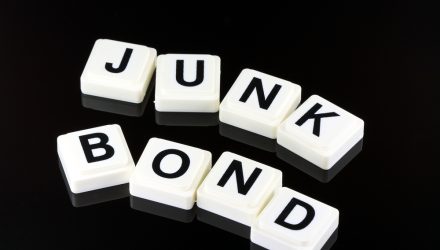Junk bonds and the related exchange traded funds are usually more volatile than their investment-grade and U.S. government debt counterparts, but with the right strategies, investors can turn that to their benefit over the long-term. Enter the FlexShares High Yield Value-Scored Bond Index Fund (NYSEArca: HYGV).
HYGV’s index reflects the performance of a broad universe of U.S.-dollar denominated high yield corporate bonds that seeks a higher total return than the overall high yield corporate bond market, as represented by the Northern Trust High Yield US Corporate Bond IndexSM. The fund generally will invest under normal circumstances at least 80% of its total assets (exclusive of collateral held from securities lending) in the securities of its index.

With its unique scoring methodology, HYGV offers investors a potentially better mousetrap for junk bonds, particularly for those looking for long-term, yield-bearing allocations.
“In the hunt for yield, many investors have opted for low-grade municipal and corporate debt, or “junk” bonds. Such instruments are considered high risk because, while they can pay off over the long run, they can also go south quickly in times of market drops and panics. That is a level of volatility a lot of debt investors cannot stand,” writes Derek Horstmeyer for the Wall Street Journal.
HYGV = Better Junk
HYGV focuses on value by pursuing the higher risk/return potential found by concentrating on a targeted credit beta; utilizes Northern Trust Credit Scoring methodology to eliminate the bottom 10% of issuers; performs liquidity assessment based on issuer’s debt outstanding, age, and remaining time to maturity with the purpose of eliminating the bottom 5% illiquid securities; and intends to match the duration of a market cap-weighted index (ICE BofAML US High Yield Index), while maintaining sector neutrality.
Investors looking for long-term exposure to high-yield corporate bonds may want to consider HYGV because the FlexShares fund can smooth out some of the bumps that frequently arise with this asset class.
“Investors who are seeking a great return from high-yield debt have to be prepared for quick and precipitous drops in the value of their holdings,” reports the Journal. “For instance, in the middle months of 1990, the average high-yield debt fund lost 13% of its value. In one month in 1998 (August) the average high-yield fund lost 7% of its value, and in June 2002 the average fund lost 8% of its value.”
For more on multi-asset strategies, visit our Multi-Asset Channel.
The opinions and forecasts expressed herein are solely those of Tom Lydon, and may not actually come to pass. Information on this site should not be used or construed as an offer to sell, a solicitation of an offer to buy, or a recommendation for any product.

